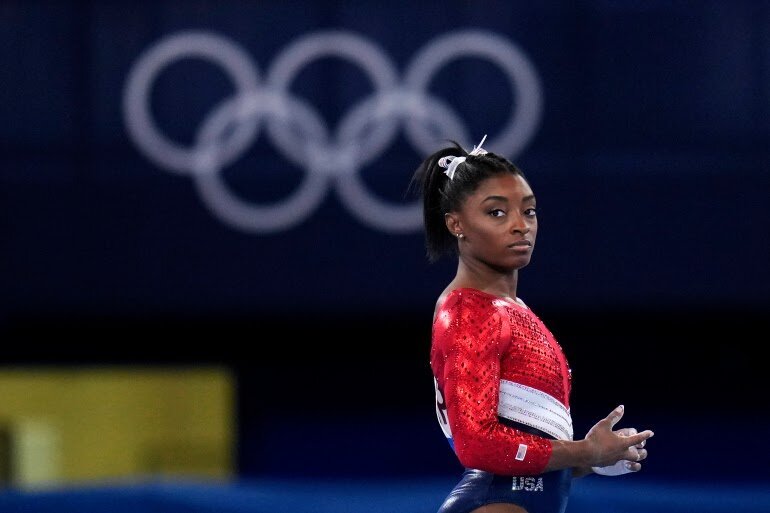Misogynoir and The Over-policing of Black Women at The Olympics
Written By Ashley Roach-McFarlaneWhat was meant to be a joyous and triumphant achievement for Sha’Carri Richardson, quickly descended into an abyss of racism and sexism, subsequently highlighting the particular intersections between the two prejudices. After an amazing performance at the US trials in June, Richardson etched ever closer to securing Olympian glory at the Tokyo Olympics. Her fantastic achievement of winning the 100m in 10.86 seconds would have made her one of the favourites to watch at the Olympics.
However, as a result of testing positive for marijuana at June’s trials, she has been banned from running the 100-meter sprint. Whilst some commentators may agree with this stance, for many, this is emblematic of the policing of black women's bodies within athletics and further solidifies the perceived ‘abnormality’ or ‘need’ to police the actions of black women.
What is Misogynoir?
Richardson falls victim to what is described as “misogynoir”. First coined by gay black feminist American academic Moya Bailey, Bailey defines it as a “particular brand of hatred directed at black women”. Much of this ideology can be found in the logics of slavery and colonialism and has trickled down throughout history into the contemporary. The violence that African women were subjected to was squarely rooted in the idea of racial and gendered inferiority. As a result, their bodies no longer were their own; they had been commodified and exploited - routinely subjected to the perverse controlling of white slave masters.
We see the articulation of this control manifest in the treatment of Richardson and other black athletes, and where this control exists, so do inconsistencies and double standards. Shortly after the announcement that Richardson would not be competing, news outlets reported that US soccer athlete and Olympian Megan Rapinoe (a white woman) had been on a marketing campaign promoting her CBD products.
Instantaneously, commentators drew stark comparisons between the actions of Rapinoe and Richardson. Rapinoe was praised for her CBD brand, Mendi, and even appeared on Forbes.com, whilst Richardson lost her opportunity to compete in the Olympics. For many, this solidified how the bodies of black women are depicted, controlled and pitted against the bodies of white women.
Hypocrisy
The response to Rapinoe’s CBD venture in comparison Richardson's personal use of marijuana demonstrates the precocious nature and logic of white supremacy. Rapinoe describes using CBD as part of her recovery as an athlete; stabilising her mood and assisting with inflammation and sleep. Richardson commented that she did use marijuana as means to cope with the loss of her biological mother. The punitive measures taken against Richardson are reflective of a double standard black athletes are subjected to and the criminalisation and racialisation of drug taking by black athletes. Furthermore, the hypocrisy is further apparent when we compare Russian athletes who have been tested positive for doping being allowed to compete under the guise of being consider “neutrals'', or forming part of the Russian Olympic Committee, which allows Russian athletes to compete under ongoing sanctions imposed by the World Anti-Doping Agency (WADA).
Marijuana still remains a prohibited substance as prescribed by WADA. A ‘drug’ that is most widely used and relatively socially acceptable. These measures seek to punish athletes that use it as a form of harm reduction, subsequently demonstrating that these arbitrary rules reinforce social and legally conservative attitudes towards drugs.
Whiteness as The Standard
The relegation of Richardson in comparison to the praise of Rapinoe would suggest that the bodies of black women need to be understood through the lens of whiteness, and if they cannot be, they either must be contorted, suppressed or destroyed. In this instance, Richardson’s banning symbolises the rejection of the agency of a black woman. The steps taken to remove Richardson fall well within the logics of white civility, as Richardson’s actions did not fall in line with what would be deemed as being ‘respectable’, therefore highlighting that white civility dictates that black women's bodies must conform to the rigid portrayals of ‘womanhood’. From this, we can map the treatment of Richardson onto a particular historiography of policing black bodies, which was grounded in slavery and colonIalism. It is one that determines the parameters of their existence.
Framing whiteness as the standard further exemplifies the need to police black bodies, which for many, begins at an early age. This surveillance underpins the neglect black women receive in health care and presenting young black girls as more sexually promiscuous than their white counterparts.
Black Women in Sports
The policing of Richardson must not be analysed in isolation, for the treatment of Richardson is but the continuation and the perpetuation of the policing of black women's bodies. We can map this attack on Richardson by looking at other examples of policing which has been prevalent in the language used to describe Serena Williams. Williams is undoubtedly one of the most coveted athletes in history. With numerous championship tournament wins under her belt; it is an understatement not to define her as the best. However, this does not insulate her from racism, nor sexism.
Often, Williams can be found on the receiving end of racist and sexist tropes, tropes that are uniquely catered to her being a black woman. Much of these tropes are located in the logics of slavery and colonialism; as a result, Williams is branded and perceived as more ‘masculine’ than her white counterparts. Animalistic language is used to divorce Williams from ‘womanhood’, which is usually reserved for able bodied white women, as slave masters posited the idea that enslaved African women were more masculine and stronger physically than their white counterparts.
Through this process, black women are ‘otherised’, subsequently allowing for the policing of their bodies to manifest, as they do not ‘fit’ within the understandings of white civility and the hegemonic articulation of European beauty standards. Through the process of ‘otherisation’, athletes such Williams are frequently described as strong, or savage - a trope that is used to legitimise the policing of their bodies. This rhetoric further lends credence to the complex construction and perpetuation of damaging myths of racial and sexual difference.
This rhetoric is also applicable to even something as benign as hair, as most recently, a decision was made by the FINA, the international governing body for aquatics, to ban specialist swimming caps tailored for afro hair. Institutions are also complicit in the ‘otherisation’ of black women. What this decision demonstrates is the enforcement of differentiation based on afro hair not falling in line with standards set by eurocentricity.
The physical ‘otherisation’ also extends to the mental health of black athletes as we see in the case of Simone Biles. Biles announced that she was withdrawing from several events at this year's Olympic games to focus on her mental health. This announcement was wildly met with praise and solidarity, however, as history dictates it; Piers Morgan responded to this announcement with a flurry of abuse and hostility, subsequently questioning the legitimacy of her announcement.
Biles bravely shared her mental state with the wider public and was met with the rabid ramblings of Piers Morgan. Morgan's position is symptomatic of the problems black women face with regards to their bodies. What Morgan suggests is that regardless of her mental state, her body exists to appease the masses. The commodification of her being justifies consumption, irrespective her mental health.
A Feminist Perspective
It is imperative that we view the treatment of Richardson through a feminist perspective as, through this lens, we will able to draw from the long history of policing of black women’s body. By mapping the punitive measures taken against Richardson onto history, we are better equipped to deal with and reject this policing. The policing of black women through the implementation of misogynoir further divorces black women from womanhood - which can find its origins in the “pre-fabricated and backward looking story of a damaged and damaging womanhood that began with slaver and seems to have no end”.
Viewing the likes of Richardson, Williams and Biles through a feminist lens enables us to make connections that seemingly would be overlooked, it enables us to recognise a range of connections among various discourses, such as racism and sexism. These discourses impact institutions, ideologies and identities, which would typically be viewed separately. As Angela Davis puts it “feminism insists on methods of thoughts and actions that urge us to think about things together that appear separate”.




